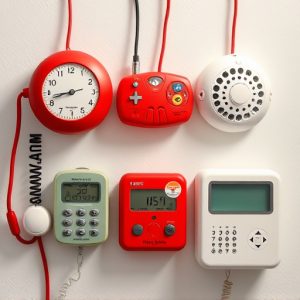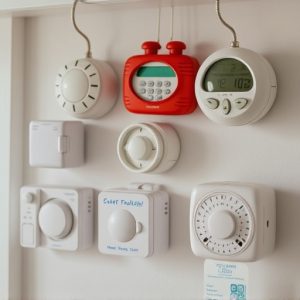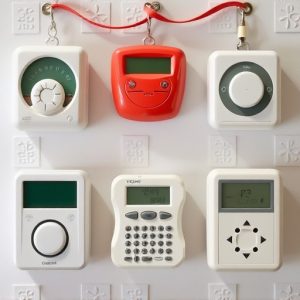Wearable Alarms for Seniors: Sound, Distance, & Top Picks for Safety
When choosing wearable security alarms for seniors, consider devices that cater to their unique need…….
When choosing wearable security alarms for seniors, consider devices that cater to their unique needs, such as mobility issues, reduced vision and hearing, and frailty. Key factors include selecting a loud (80-120 dB) personal alarm sound and ensuring an activation range of 30-50 feet. Top choices are LifeAlert's 120 dB system with a 400-foot range and SafeLink's 100 dB button with fall detection, two-way communication, and quick response times. Integrated caregiving systems enhance safety by enabling real-time alerts for falls or emergencies, crucial for timely intervention in larger spaces like homes or care facilities.
As our population ages, ensuring the safety of seniors becomes paramount. Wearable security alarms offer a discrete yet powerful solution for independent living. This article explores how these devices cater to the unique needs of seniors, focusing on key features like best personal alarm sound and distance. We’ll guide you through top market offerings, integration with caregiving systems, and effective safety strategies, empowering you to make informed choices for enhanced senior safety.
- Understanding the Needs of Seniors and Wearable Alarms
- Key Features to Consider for Best Personal Alarm Sound and Distance
- Top Wearable Security Alarms for Seniors on the Market
- Integration with Caregiving Systems and Safety Strategies
Understanding the Needs of Seniors and Wearable Alarms
Understanding the unique needs of seniors is paramount when considering wearable security alarms. As individuals age, they may face mobility issues, reduced vision or hearing, and general frailty, making them more susceptible to falls, accidents, or even scams. Wearable alarms address these concerns by offering a discrete yet powerful safety net. These devices are designed to be comfortable and easy to use, allowing seniors to maintain their independence while ensuring immediate assistance in case of an emergency.
When selecting a wearable alarm for seniors, one of the key considerations is the best personal alarm sound that can penetrate potential hearing impairments. Additionally, distance is crucial; alarms should have a range that allows for prompt response from caregivers or emergency services. Features like automatic fall detection and easy-to-use buttons further enhance their appeal, ensuring peace of mind for both seniors and their loved ones.
Key Features to Consider for Best Personal Alarm Sound and Distance
When choosing a wearable security alarm for seniors, one of the critical factors is the Best Personal Alarm Sound Distance. The alarm should have a loud and distinct sound that can be heard clearly in various environments, ensuring it captures attention quickly. A good personal alarm typically produces sounds ranging from 80 to 120 decibels, which is about as loud as a power lawnmower or a busy street. This volume is essential for drawing immediate assistance, especially if the senior lives alone.
Additionally, considering the Best Personal Alarm Sound Distance means selecting a device with a range that allows it to be activated at a safe distance. A typical personal alarm should have a range of 30 to 50 feet (9 to 15 meters), enabling seniors to call for help without having to physically reach the alarm itself. This feature is particularly useful in emergencies where mobility is limited or when the senior needs assistance but cannot walk to the alarm.
Top Wearable Security Alarms for Seniors on the Market
When it comes to choosing the top wearable security alarms for seniors, several options stand out for their effectiveness and ease of use. One prominent choice is the LifeAlert Personal Alarm System, renowned for its powerful 120dB alarm sound that can attract attention from a considerable distance—up to 400 feet away. This device allows seniors to quickly alert others in case of an emergency, especially when they are alone.
Another highly rated option is the SafeLink Medical Alert Button, which offers not only a loud 100dB alarm but also two-way communication and automatic fall detection. The button can be worn as a bracelet or clip, making it convenient and accessible. With a press of the button, seniors can connect to live agents who provide assistance, ensuring they receive help promptly, whether they’ve fallen or need medical attention due to other emergencies.
Integration with Caregiving Systems and Safety Strategies
Wearable security alarms for seniors can significantly enhance their safety and peace of mind, especially when integrated with caregiving systems. These devices often come equipped with features that allow them to be linked to monitoring platforms, enabling caregivers to receive alerts in real-time if a senior falls or experiences an emergency. Caregivers can then take immediate action, ensuring quick response times, which is crucial for elderly individuals at risk of mobility issues or cognitive impairments.
One key aspect to consider is the best personal alarm sound distance. Alarms should emit loud, distinct signals that can be heard both indoors and outdoors, within a suitable range. This ensures seniors can activate their alarms without difficulty, and caregivers can detect them promptly, especially in larger homes or care facilities. Effective integration of these alarms with existing safety strategies can create a comprehensive care network, fostering a safer environment for the elderly population.
Wearable security alarms offer a peace of mind solution for seniors, ensuring swift assistance in emergencies. By understanding specific needs and considering key features like powerful sound output and long range connectivity, caregivers can choose from top-rated devices on the market. Integration with caregiving systems further enhances safety strategies, making these wearables indispensable tools for maintaining senior independence and security.


